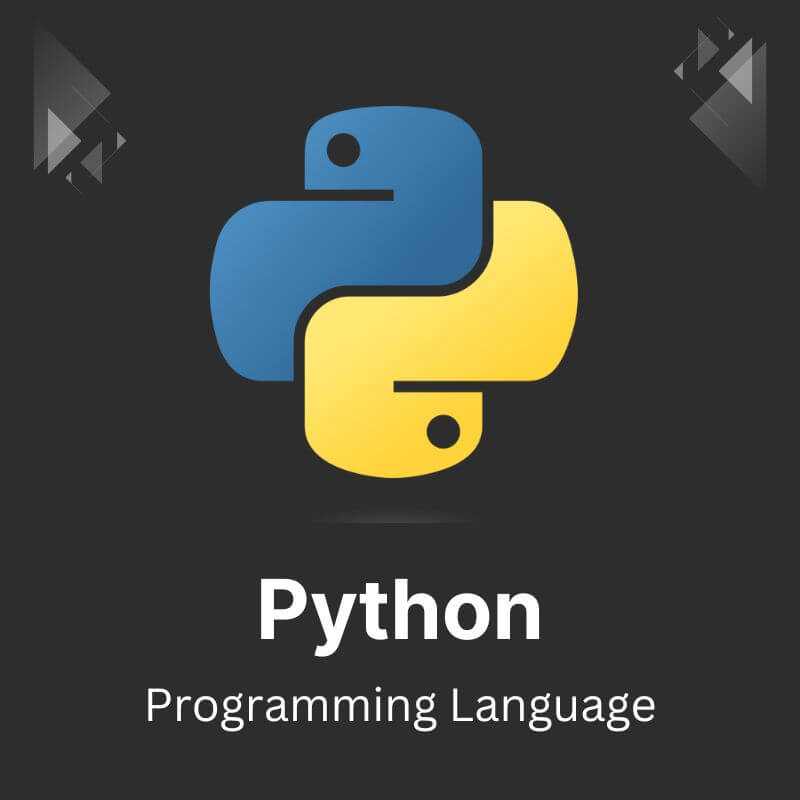In the world of programming, data manipulation is a fundamental aspect, and strings play a crucial role in handling textual information. Python, a versatile and user-friendly language, offers robust support for working with strings, making it an excellent choice for tasks involving text processing, data analysis, and web development.
Take a look at all the topics that are discussed in this article:
Python strings are a sequence of Unicode characters enclosed within single quotes (‘) or double quotes (“). They provide a wide range of operations and built-in methods, enabling developers to perform various operations with ease.
Whether you’re working on a simple script or a complex application, understanding how to handle strings effectively is an essential skill for any Python programmer.
Creating a String in Python
In Python, a string is a sequence of characters enclosed within single quotes (‘), double quotes (“), or triple quotes (”’ or “””). Strings are immutable data types, which means that once created, their content cannot be modified. However, you can create new strings by concatenating, slicing, or performing operations on existing strings.
Creating a string in Python is straightforward. You can assign a sequence of characters to a variable, and Python will automatically interpret it as a string.
Here’s an example:
# Creating a string using single quotes
greeting = 'Hello, World!'
print(greeting) # Output: Hello, World!
# Creating a string using double quotes
message = "Welcome to Python!"
print(message) # Output: Welcome to Python!
# Creating a multi-line string using triple quotes
poem = '''Roses are red,
Violets are blue,
Python is awesome,
And so are you!'''
print(poem)
String Indexing and Splitting
In Python, strings are sequences of characters, and each character has an associated index. Indexing allows you to access individual characters within a string while splitting enables you to divide a string into substrings based on a specified delimiter.
String Indexing
Python strings are zero-indexed, meaning the first character has an index of 0, the second character has an index of 1, and so on. You can access individual characters using their index positions within square brackets [].
Example:
message = "Hello, World!"
# Accessing individual characters
print(message[0]) # Output: H
print(message[7]) # Output: W
# Negative indexing (counting from the end)
print(message[-1]) # Output: !
print(message[-5]) # Output: o
String Splitting
The split() method in Python is used to divide a string into substrings based on a specified delimiter (a character or sequence of characters that separates the substrings). If no delimiter is provided, the method splits the string by whitespace characters (spaces, tabs, newlines).
Example:
text = "apple,banana,cherry,date"
# Splitting a string by a comma
fruits = text.split(",")
print(fruits) # Output: ['apple', 'banana', 'cherry', 'date']
# Splitting a string by whitespace
sentence = "This is a sample sentence."
words = sentence.split()
print(words) # Output: ['This', 'is', 'a', 'sample', 'sentence.']
Reassigning Strings
In Python, strings are immutable, which means that once a string is created, its value cannot be changed directly. However, you can reassign a new value to the same string variable, effectively replacing the existing string with a new one.
When you reassign a string, Python creates a new string object in memory and associates the variable with the new object. The previous string object may still exist in memory if it is referenced elsewhere in your code, but the variable you reassigned now points to the new string object.
Here’s an example to illustrate string reassignment:
greeting = "Hello"
print(greeting) # Output: Hello
# Reassigning a new value to the string variable
greeting = "Hi there"
print(greeting) # Output: Hi there
Deleting the String
In Python, strings are immutable, which means you cannot directly modify or delete characters from an existing string. However, you can effectively “delete” a string by reassigning the variable to a new string value or by removing the entire string object from memory.
Since strings are immutable, any operation that appears to modify a string creates a new string object in memory. This includes operations like string slicing, concatenation, and replacement methods.
Here’s an example that demonstrates how to “delete” a string in Python:
message = "Hello, World!"
print(message) # Output: Hello, World!
# Reassign the variable to delete the string
message = ""
print(message) # Output: (an empty string)
# Alternatively, you can use the del keyword to remove the variable
del message
print(message) # Raises a NameError: name 'message' is not defined
Python String Formatting
String formatting is the process of embedding values within strings in a clean and readable way. Python provides several methods for string formatting, including the classic % operator, the str.format() method, and the more recent f-strings (formatted string literals).
1. % Operator (Classic Method)
The % operator is the classic way of formatting strings in Python. It uses a string as a template and substitutes placeholders with values passed as additional arguments.
Example:
name = "Alice"
age = 25
# Using the % operator
print("My name is %s and I'm %d years old." % (name, age))
# Output: My name is Alice and I'm 25 years old.
2. str.format() Method
The str.format() method is a more flexible and powerful way of formatting strings. It uses curly braces {} as placeholders and can handle various data types and formatting specifications.
Example:
name = "Bob"
age = 30
# Using the str.format() method
print("My name is {} and I'm {} years old.".format(name, age))
# Output: My name is Bob and I'm 30 years old.
3. f-strings (Formatted String Literals)
Python 3.6 introduced f-strings, which provide a concise and expressive way to format strings. F-strings allow you to embed expressions inside string literals, enclosed within curly braces {}.
Example:
name = "Charlie"
age = 35
# Using f-strings
print(f"My name is {name} and I'm {age} years old.")
# Output: My name is Charlie and I'm 35 years old.
String formatting is a crucial aspect of working with strings in Python. It allows you to create dynamic and readable strings by combining static text with variable values. The choice of formatting method depends on personal preference, code readability, and the specific requirements of your project.


